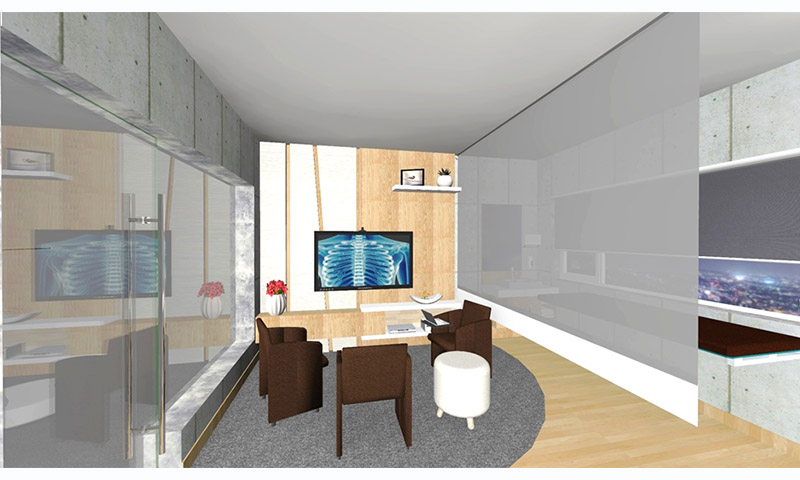Pradeep is a dynamic multi-tasking professional with exposure in multinational and multicultural setups, Pradeep spearheads startup projects, with experience in design management, operations, and project management for setting up and commissioning innovative built environments. He is an Architect and has spent his career with global real estate companies, world-class healthcare and education providers conceptualizing, master planning and implementing the design, construction, and procurement management of projects from feasibility to handover.
We are all going through challenging times.
We salute the efforts and dedication shown by our doctors and nurses.
Healthcare and education are the backbone of an economy, and doctors are leading the fight against the pandemic to keep the economy moving.
As a gesture to show my respect to the doctors, nurses and all healthcare professionals, I have designed a concept called “Clinic of the future” and want to dedicate it to all the doctors, nurses and healthcare professionals.
Due to the pandemic, telemedicine has changed the way we seek medical advice from physicians. Design of doctor’s consulting rooms will have to change to incorporate these new requirements. Existing formal consulting room design can be reconfigured in a more patient friendly and informal manner. Floor plan of consulting rooms should be inviting, open, clutter free and preferably should give a homely ambience.
This article will provide the reader with basic guidelines required to redesign an existing doctors consulting room into future friendly consulting space.
Let us consider a typical 4m X 3m general physicians consulting room. This room has doctors table, visitor’s chairs, patient chair, examination couch, doctor’s hand wash and privacy curtain for examination couch.
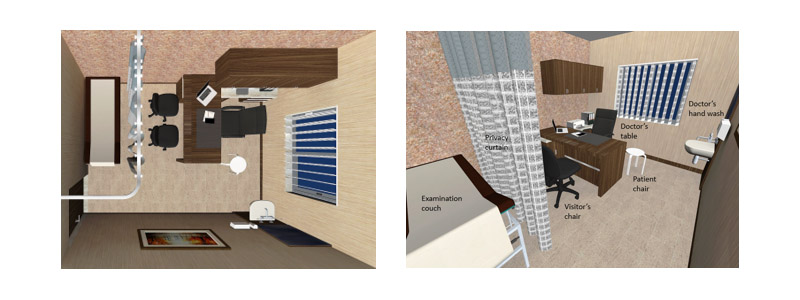
This typical configuration can be changed by re-looking at the entire framework of patient experience. Patient’s journey is influenced by the servicescape, by doctor, the contact personal, clinic systems & procedures and experiences shared by other patients.
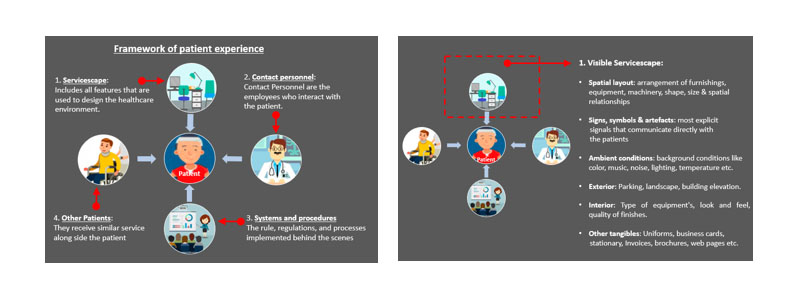
Visible servicescape which impact patient journey consists of spatial layout, signs, symbols, artefacts, ambient conditions, exterior elements, interior elements and other tangibles.
In this article, I will only focus on the spatial layout that impacts patient’s experience. The existing clinic layout conveys a sense of office environment with desk as a physical barrier between the doctor and the patient. The same 4m x 3m space can be innovatively planned with informal doctor’s seating, display wall, patient chair, visitors chair, doctor’s hand wash, examination bed and privacy curtain, all rearranged as per my conceptual layout shown below.
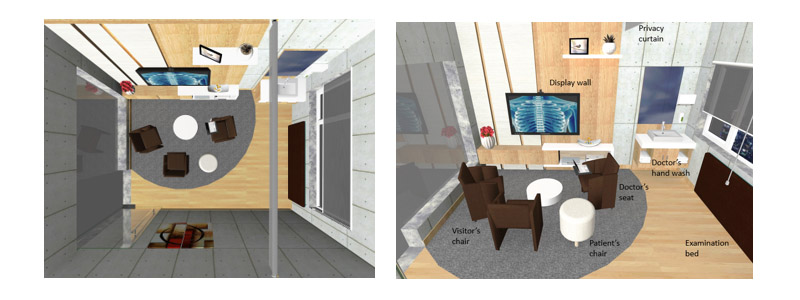
The narrow conventional doctor’s room opens into a nice spacious interaction zone. Doctor, patient and patients relatives sit and discuss the health issues in a friendly and homely environment. A large display wall helps doctor present the reports and explain the ailments in a more interactive manner. Informative videos and remedies can be presented to the patient very conveniently with this system. Depending on the available space, clinical specialty and budget a foldable examination bed also creates a sense of openness in the room. Privacy curtain is only required during the patient examination and is kept retracted along the ceiling, which also gives a sense of openness to the room.
During patient examination, remote controlled folding examination couch opens up and a remote controlled drop down curtain provides necessary privacy. After examination, the curtain retracts and the couch folds back on the wall.
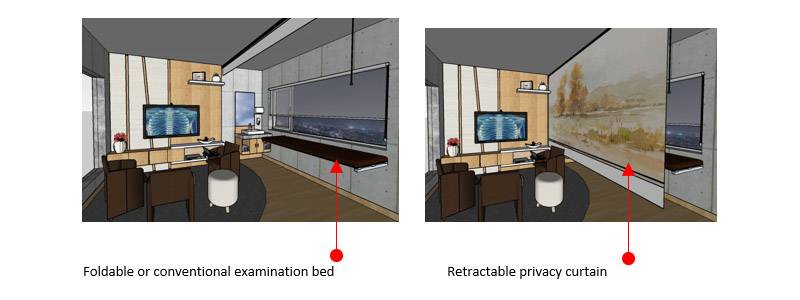
This innovative doctor’s consulting room that I have designed can be adopted by allopathy, Ayurveda, homeopathy or any other alternative medicine practitioners.
The single doctor clinic, with a dispensary is spread across all the Tier I, II, III cities and villages across India and other developing regions. A great deal of primary interventions happen in these clinics. This model is one of the most convenient methods for majority of the population to get advice and prescription for their minor ailments. My aim is to improve the patient and doctor interaction space with the available technology in the limited space. Eventually we will have to educate the society to move towards preventive cure rather than the present reactive treatment.
